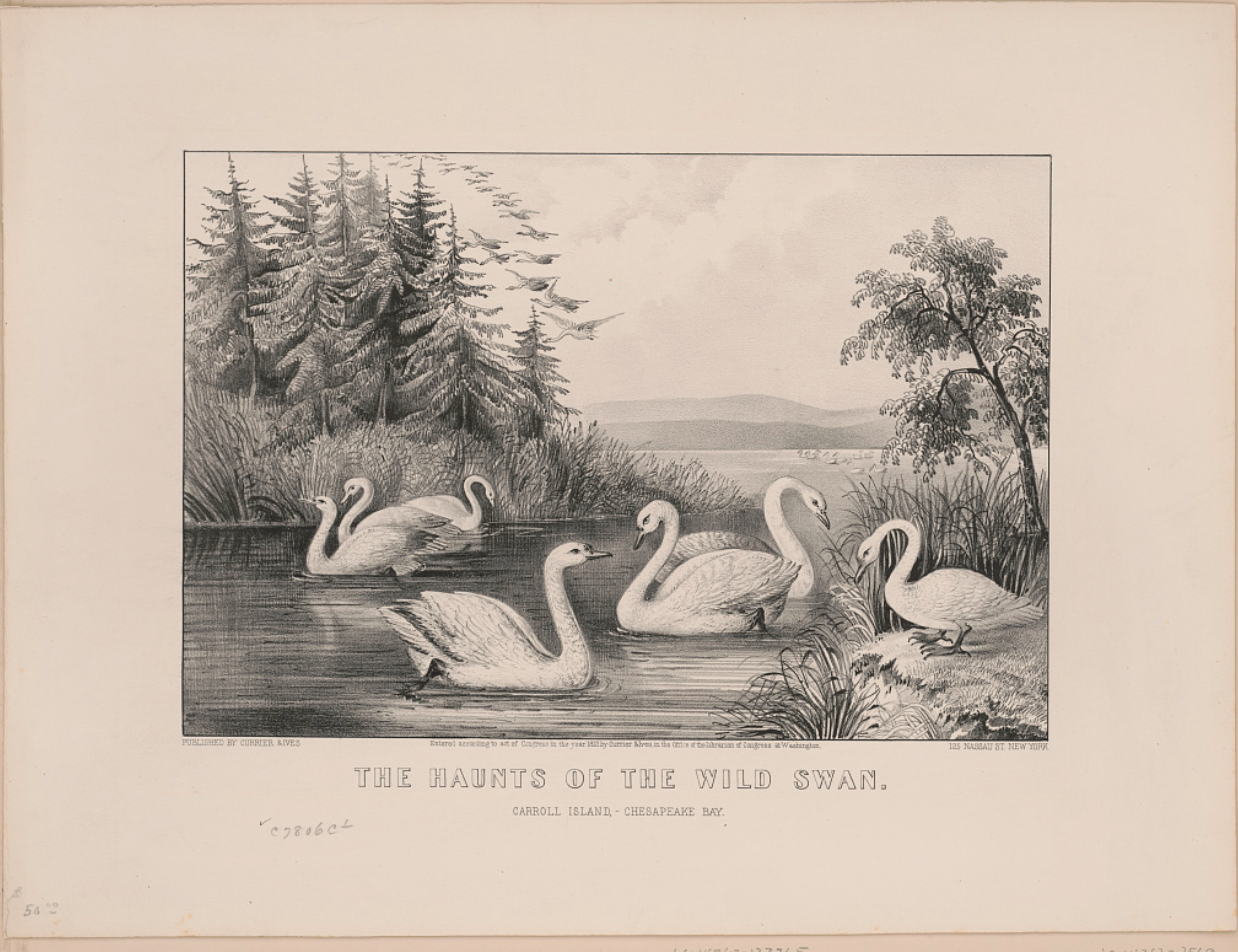Teach This Poem, though developed with a classroom in mind, can be easily adapted for remote learning, hybrid learning models, or in-person classes. Please see our suggestions for how to adapt this lesson for remote or blended learning. We have also noted suggestions when applicable and will continue to add to these suggestions online.

Look closely at this lithograph of swans.
The following activities and questions are designed to help your students use their noticing skills to move through the poem and develop their thinking skills so they understand its meaning with confidence, using what they’ve noticed as evidence for their interpretations. Read more about the framework upon which these activities are based.
-
Warm-up: (Teachers, divide students into small groups depending on your class size. Prepare a few different rounds of the telephone game, with three syllable words, simple sentences, and your own idea.) In your small groups, play the telephone game. After each round, the last person in line should share what they heard. Then, your teacher will share the original word/sentence. After playing a few rounds, discuss what this tells us about language and/or translation.
-
Before Reading the Poem: Look closely at this lithograph of swans. What stands out to you? Why? What questions does this image evoke? Why?
-
Reading the Poem: Silently read the poem “The Wild Swans” by Li Qingzhao. What do you notice about the poem? Note any words, phrases, or structures that stand out to you, or any questions you might have.
-
Listening to the Poem: Enlist two volunteers and listen as the poem is read aloud twice, and write down any additional words and phrases that stand out to you. Or, you can listen to an audio recording of the poem.
-
Small Group Discussion: Share what you noticed about the poem with a small group of students. Based on the details you just shared, what connections can you make between the poem and the resources from the beginning of class? Why? How might you describe the speaker in this poem? Why?
-
Whole Class Discussion: How would you describe the relationship between the speaker and the “he” in the poem? Why? What does this poem have to say about longing and/or nature? (Teachers, after reading the English version of the poem, give students the other two translations to read.) Look closely at these translations. What, if anything, stands out to you in these translations? Why?
-
Extension for Grades 7-8: In honor of National Translation Month, read the short essay “Translating a Peony” by Ilya Kaminsky. Discuss with your class, which version of this poem do you like better? Why? What do these different versions of this poem and the different versions of Qingzhao’s poem tell us about language and/or translation?
-
Extension for Grades 9-12: Continue learning more about poetry and translation by joining with a classmate or small group to try translating a poem. With your partner or small group, discuss how you might translate the poem you chose. Do you want to translate from one language to another, or do you want to translate the written word to another art form, like dance, music, or something else? Share your poem in “translation” and discuss your experiences with your classmates. How did it feel to think about language and translation? What was easy and what was difficult?
Recorded at Poets Forum 2014 as part of a series of talks during which the Chancellors of the Academy of American Poets examine issues central to poetry, Khaled Mattawa discusses the challenges and importance of poetry in translation: “My musical reference for American languages is the blues…The blues never repeats the line exactly the same, and I feel like if I repeat the line exactly the same it would not hit that interesting note in English, which is to tinker with it a little bit.” Watch the video.
